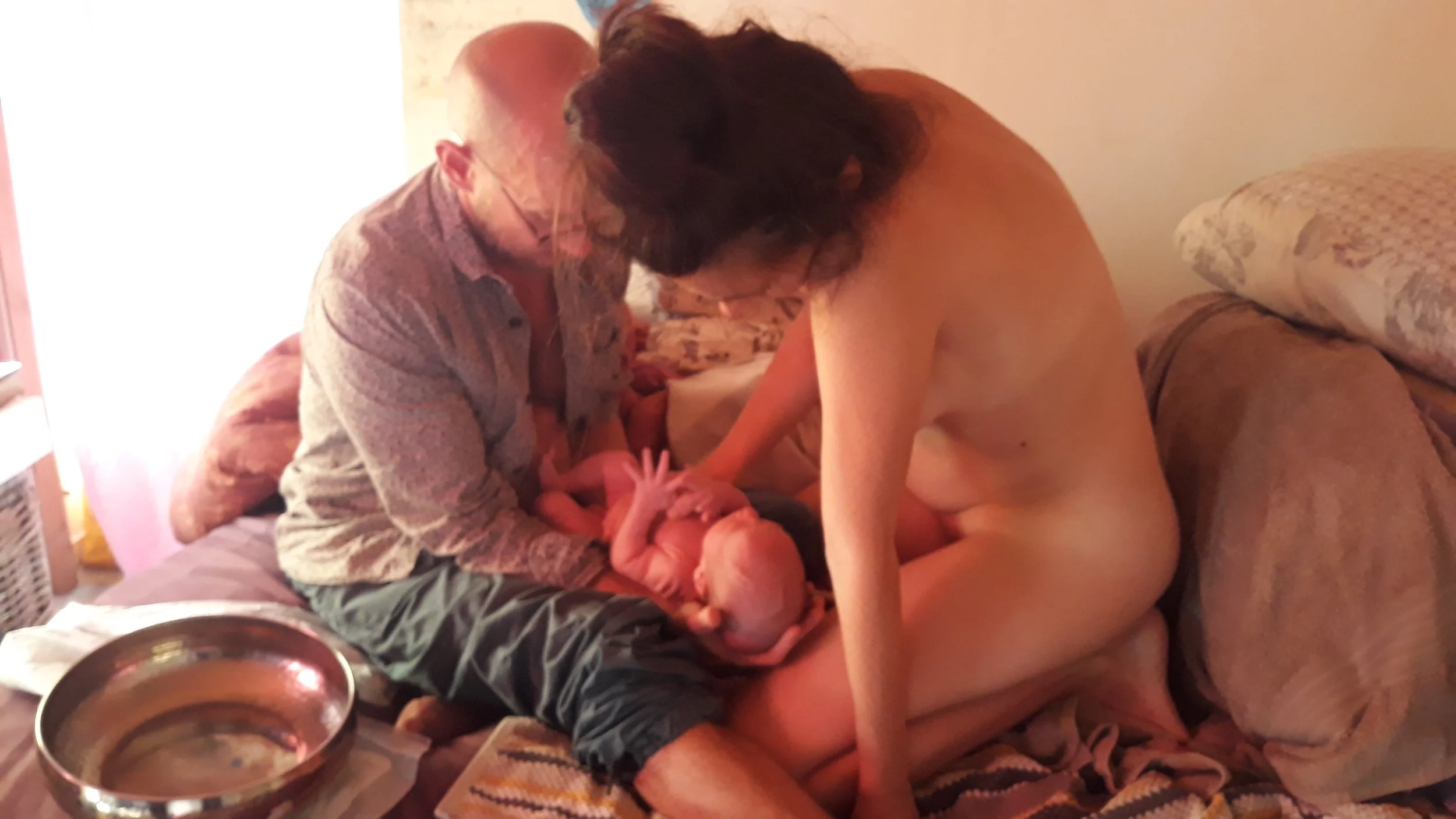The Birth Pause
Written back when I was still a midwife, practicing in the hospital…
A Birth Pause in Room 6.
It was her first baby. She was well supported by her partner. They had planned and hoped for a gentle birth in the birth centre, using the hypnobirthing techniques they had learned together. But things had not quite gone that way. Here they were in a busy obstetric delivery suite, with white walls, a hospital bed and a monitor.
Now I’m not one for letting things like hospital rooms and monitors get in the way of a beautiful and empowering birth experience.
We closed the blinds and closed the door. We put on the hypnobirthing music I carried in my bag, and with the continuous monitor strapped to her belly, quietly tap-tapping, she leaned over the back of the bed on her knees. Covered in a sheet providing a cocoon at this vulnerable time, hopefully creating a melting pot from which oxytocin could ooze from her being.
Her labour moved on so smoothly and quickly in a room that had seen its fair amount of stalled labours and ‘failure to progress’. I felt that her baby was going to be here soon, so prepared the bed beneath her. Laying down some absorbent inco pads to catch the waters as they emerged, and a couple of towels to provide a soft landing area for her baby.
Time Stands Still
Slowly the baby crowned and emerged, wet and slippery, and I guided her gently down onto the waiting towels between her knees. A good midwife knows when a baby is making a smooth transition into this world and no rubbing or stimulation is necessary. This midwife was happy so I stepped back and watched. Far enough to allow this private moment to unfold, close enough to observe.
Dad was in awe of everything. She took a moment to come back to her body. To take a breathe and then look down to see her newly arrived miracle. She looked intently, touched and stroked this new being between her knees.
Time stood still watching the scene unfold. What felt like an age was just minutes. It takes a lot of patience to step back and trust, without feeling the pull to ‘help’. That feeling subsides more each time. Eventually she picked up her baby and the emotion that poured out from every pore was incredible. It makes me emotional even now remembering that moment.
All this time I was accompanied by a medical student, who was witnessing her first birth. I was glad she was with me on that day.
It was magical. A whole new experience for me as a midwife definitely.
Why hadn’t I thought of suggesting this before? And it made complete sense.
At the moment of birth, rather than having the baby passed directly into your waiting arms, at a time when you are probably not quite connected to this earth, still reeling from the power of contractions, and the enigmatic sensations of expulsion, you have a moment to return. To steady yourself, and be ready to actually meet your baby.
The opportunity doesn’t present itself that often though it seems. If you’re lying on your back, the midwife or doctor will be doing the catching and then pass the baby up to you. If you’re in the birth pool you can catch your own baby, but it’s usually a pretty immediate thing to lift them out of the water.
Squatting or upright birth would probably be a physiological choice for humans, and then this ‘birth pause’ would make sense in that context.
As a midwife, faced with looking after different people, in not always ‘oxytocin-conducive’ environments it can take a little bravery to have a go at something new. But have a go, and you’ll be so glad you did.
This is an old but incredible video of how it looks…
https://www.youtube.com/watch?v=aAF5n3GBkPA
Birth in the squatting position
More about the ‘birth pause’
http://www.ncbi.nlm.nih.gov/pmc/articles/PMC320973/
Birth Planning and The Pause
This is NOT something that is done routinely, even in birth centres or homebirths. Many midwives are taught to deliver babies, hands on perineums and guide them straight into the arms of the mother or birthing person. There is a lot of fear around birth in our current medicalised culture, which means midwives and doctors are used to taking responsibility for the safety of birth, and are not used to relinquishing this, as the blame culture has amplified the fear even more.This looks like rubbing, stimulation, putting hats and blankets on babies immediately s they emerge from the womb.
If this is something you want you will have to make that crystal clear on your birthplan and make sure your attendants know exactly what you mean by this ‘pause’.
Something along the lines of ‘I will guide my own baby down and pick them up when I am ready. Do not rub or stimulate my baby unless they are obviously compromised. Please provide a soft and absorbent space for them to land.’
This relates to birthing on land, most likely in an upright or kneeling position, although is possible in a semi recumbent position.
Birthkeeping and The Pause
This is something that could be occurring more naturally with freebirth where there are no midwives to do the ‘delivering’.
As birth keepers and doulas we can share this with our clients and talk about this sacred moment, and advocating for this when the time comes. It’s so ingrained in midwives to pick up the baby and ‘deliver’ it to the mum or birthing person, that this can be a new conversation via the birth plan.
By holding this space with reverence and respect, the natural instincts can unfold. This is the essence of undisturbed birth, where we are reminded that sometimes, the most profound support we can offer is to step back and simply be.

